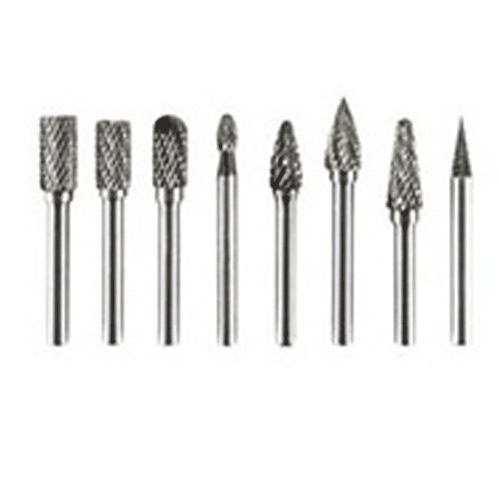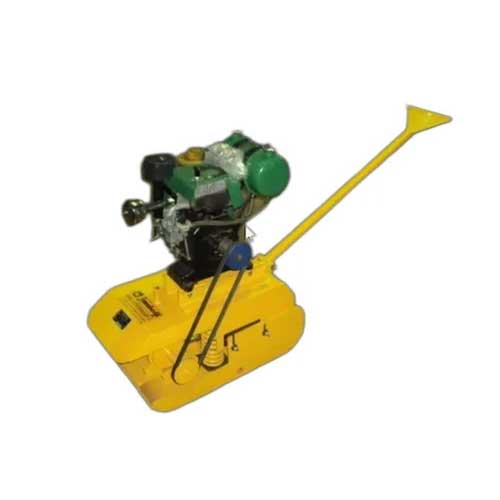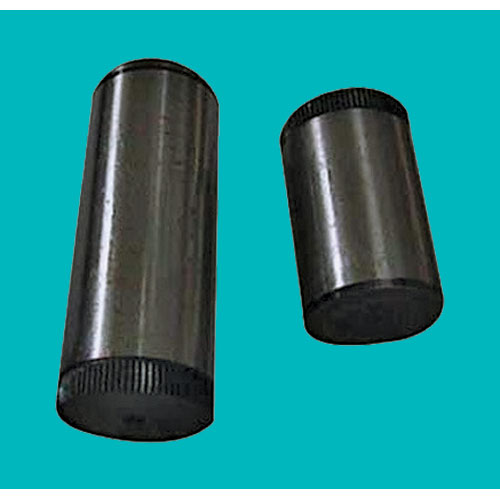Schedule a Call Back
IPF Video Roundtable: Gearboxes of tomorrow to be smart and compact
 Industry News
Industry News- Nov 28,20

There are various devises being used for transmitting power from motor to machine, like belt drives, chain drives, gearbox, etc depending on type of application, shaft locations and amount of power required to transmit at what revolution per minute (RPM). Gearbox - a system in which the mechanical energy is transferred from one device to another - is used to increase torque while reducing speed. Gears and their mechanical characteristics are widely employed throughout industry to transmit motion and power in a variety of mechanical devices, such as clocks, instrumentation, and equipment, and to reduce or increase speed and torque in a variety of motorised devices, including automobiles, motorcycles, and machines. Gearboxes are useful in easing out the mechanical functioning in industries.
Going forward factors like alternate materials, macro/micro gear geometry, process optimisation, Total Cost of Ownership (TCO), etc are likely to drive the gearbox market. At the same time trends like electro-mobility (e-mobility), need for energy efficiency, etc will require gearbox makers to make changes in their offerings.
Against this background, Industrial Products Finder (IPF) hosted a video Roundtable - titled “Gearbox industry: Geared up for the future?†- on November 20, 2020 to discuss the current status and future trends in the industry. The Roundtable - moderated by Rakesh Rao, Executive Editor of IPF - saw participations of Seshagiri Ramachandra, MD, Gears and Gear Drives (India) Pvt Ltd; P L Muthusekkar, Managing Director, NORD Drivesystems Pvt Ltd; Biswa Mandal, CTO, Schaeffler India; Sanjay Bhise, Sr GM Design, ElectroMech Material Handling Systems India Pvt Ltd; and Rajesh Gawhale, Head - Nimble Machines, a Strategic business unit of UCAM Pvt Ltd.
According to Seshagiri, gearbox - a prime line in many products and machineries produced around the globe - is widely used in various sectors like automobiles, agricultural machinery, process machinery, plastic, packaging & printing machinery, defence and renewable energy.
In India, the gears market is estimated at about Rs 6500 to 6700 crores. Muthusekkar informed, “Gearbox market can be categorised into low speed (ie, less than 1800 RPM either input or output) and high speed (more than 1800 RPM). The peripheral velocity or the pitch speed of the gears decides whether it is high-speed or low-speed. Low speed gearboxes segment offers huge opportunity as it occupies the large chunk of market.â€Â
Ensuring best performance
Bearings form a critical part of the gearboxes and play a very key role in smooth operation of gearboxes. Highlighting the importance of bearings in the gearbox, Biswa Mandal said, “Industrial gearboxes are becoming increasingly compact in size with a design envelope where power levels are continuously increasing. Now, this high increase of power density within a small space, increases the demand to select the right type of bearing to be used.â€ÂThere are different types of bearings in a particular gearbox. “Each of type of bearing has been deployed for a specific purpose and they also operate in different conditions. Thus, bearings require different type of designs for the gears. Also, the lubricating system is a critical factor that defines the design of the bearings,†explains Mandal.
From the end user's perspective, gearbox is the key element in the machinery as the whole assembly is in the frame. Sanjay Bhise opined, “Gearboxes are primarily selected based on the operation & application, performance of a particular gearbox, torque ratio and the environmental conditions. These are crucial aspects that need to be looked into while selecting any gearboxes.â€Â
In lean manufacturing, it is important to have all components to be available on time for timely delivery of the end-product. Gearbox has high lead time and takes long time for the delivery. “We have seen in the recent past modular design approach been adopted for the gear brake motor industry. We need a similar kind of approach for the gearbox so that we can remove or minimise the bottlenecks in the gearbox manufacturing. Thus, gearboxes can be made available at a faster rate and we (the end-users) can cater quickly to our customer’s demand and improve the customer satisfaction,†stated Bhise.
Cost vs quality
Gear machining process is witnessing changes to fulfil the new requirements of the customers; hence gear makers must remain flexible and productive. Shedding light on the gear manufacturing process, Rajesh Gawhale said, “In the gear manufacturing, the main process is gear hobbing. Then, based on the criticality of the gears, we have the finishing processes like gear shaping, gear grinding, and honing. Majority of the gears - which need the accuracy of DIN 7 specification - are generally finished using gear hobbing.†When an application needs a higher class of accuracies like DIN 5 or DIN 6, then further finishing operations are generally done through gear grinding and honing.Producing gear with high accuracy is a major challenge because the Indian gear manufacturing industry is largely dominated by used gear cutting machines, which are unable to produce the high-quality gears that meet the industry’s requirements. “The used gear machines have less initial investment, but they cannot give you accuracy required by the end-user industries like gearbox manufacturer or an auto maker (automobile is one of the largest consumers of the gears and gearboxes),†explained Gawhale.
Gears are very technologically advanced components and need skilled labour for producing them. The industry has been facing the challenge of the availability of skilled labour for a long time. As a solution, Gawhale suggested companies to go for automation so that their dependency on the human are minimum and they can also produce quality products consistently. He elaborated, “There is a myth that if initial investment is high, then the cost per piece will be higher. People have started realising that automated machines, though they are expensive, can give high-volume production at best quality and low cost per piece.â€Â
Covid effect
Though the Covid has shrunk India’s GDP by per centage, decline in the demand was visible even in the last year. Muthusekkar stated, “The market was not in a good shape last year itself - ie, even before Covid 19 struck the global economy - particularly after June 2019. In general, the businesses in India and globally were not doing well in 2019 compared to 2018 and 2017. Covid exacerbated the situation in 2020 with demand seeing historical dip due to lock down enforced by the government which led to slumber in the country’s industrial activity. Recovery from the effects of Covid 19 to reach the last year’s level (which itself was a below par year for the industry) will take little long.â€ÂSeshagiri added, “The market is huge. Post-Covid, orders have started trickling in generating hope in industry. Probably, we need to wait for another 2-3 months to get a clear picture on where it is heading to.â€Â
Covid has suppressed consumption and economic growth; thus, leading to uncertainty in the business levels. “At this moment, people are a little hesitant, and they are not going ahead with their investment, the way they were doing, let's say a couple of years back. We have to wait and watch for a couple of months, and then many things will get answered in the due course,†opined Gawhale.
Experts estimate that the market size of gears and gearboxes has gone down by 25-30 per cent because of the lockdown triggered by Covid 19, which was followed by historic slowdown and de-growth in all industries. Sales of majority of the companies were down at least by 40-50 per cent compared to same period last year.
According to Seshagiri, certain sectors like defence and agriculture have not gone down as the procurement cycle/procedures are different in these sectors compared to other end-user industries. “Our output for the agricultural machinery is almost same and defence has been going through the same cycle of requirements. On the other hand, demand for industrial gearboxes for process machinery has come down drastically. Even if somebody places an order, they do not have money to pick up. As a result, lots of finished goods are struck in the factory premises as the customers have no money to make the payment. We are still in a period of certainty and no one knows when we will reach pre-Covid level (which itself was low compared to the previous years). If the company is able to quickly change the product mix to suit the existing demand, possibility of survival is much better,†he added.
Getting smarter
Seshagiri foresees a great improvement in material science and heat treatment. “Tribology has increased a lot in the gearbox operation. Today gearbox can run at much hotter temperature, than what it was 3-4 decades ago. A lot of composite materials are being developed for gear housing. These changes will dictate the future of the gearbox industry,†he opined.Muthusekkar foresees increase in use of 3-D printing (additive manufacturing) technology to produce gears in the near future as the technology offers high precision for producing gears.
Biswa Mandal commented, “Machines are becoming smarter and their capability to take intelligent decisions on their own (without human interventions) is increasing. As machines become smart, gearbox (which is critical, yet complex component) also needs to be smart. While we have made a very good progress in the last 100 years, now there will be a quantum jump to make the gearbox more intelligent.â€Â
According to Sanjay Bhise, augmented reality (AR), artificial intelligence (AI) and IoT can give a better edge as far as the smart gearboxes are concerned because it will be the part and parcel of the entire machinery. Automation, smart machine and advanced metal will play a role to improve the power to weight ratio, which will be the future, he stated.
Related Stories

Manufacturing, infrastructure growth to drive India’s bearing market
Global bearing demand is accelerating on the back of Asia’s industrial expansion. India is set to record robust gains driven by manufacturing and infrastructure growth.
Read more
SKF Unveils ARCTIC15 Steel for Next-Gen Aeroengine Bearings
SKF has launched ARCTIC15, a high-temperature, corrosion-tolerant steel enabling next-generation, fuel-efficient aeroengine bearing designs
Read more
Can AI be the game changer for Indian manufacturers?
While manpower issues and quality are driving adoption of industrial automation, cost and lack of knowledge are causing hindrances. Artificial intelligence (AI) can be the game changer, writes Rakes..
Read moreRelated Products

Carbide Burrs
SRT Industrial Tools & Equipments offers a wide range of carbide burrs.

Jamshedji Soil Compactor
Jamshedji Constro Equip Pvt Ltd offers a wide range of jamshedji soil compactor.

Ground Pins
Hans Machineries Private Limited offers a wide range of pins, hardened & ground. Read more















